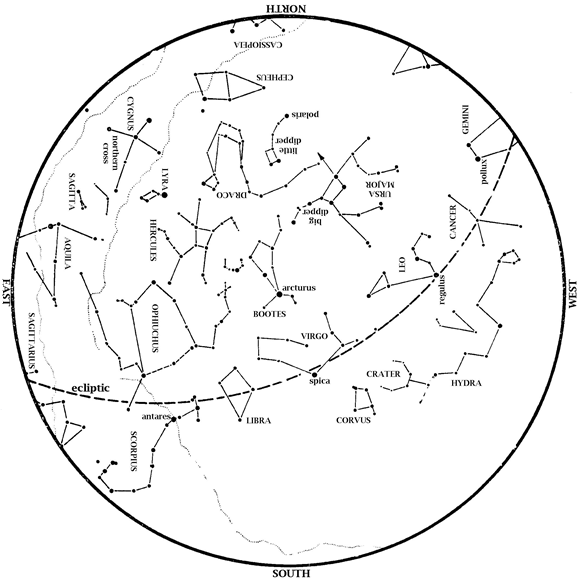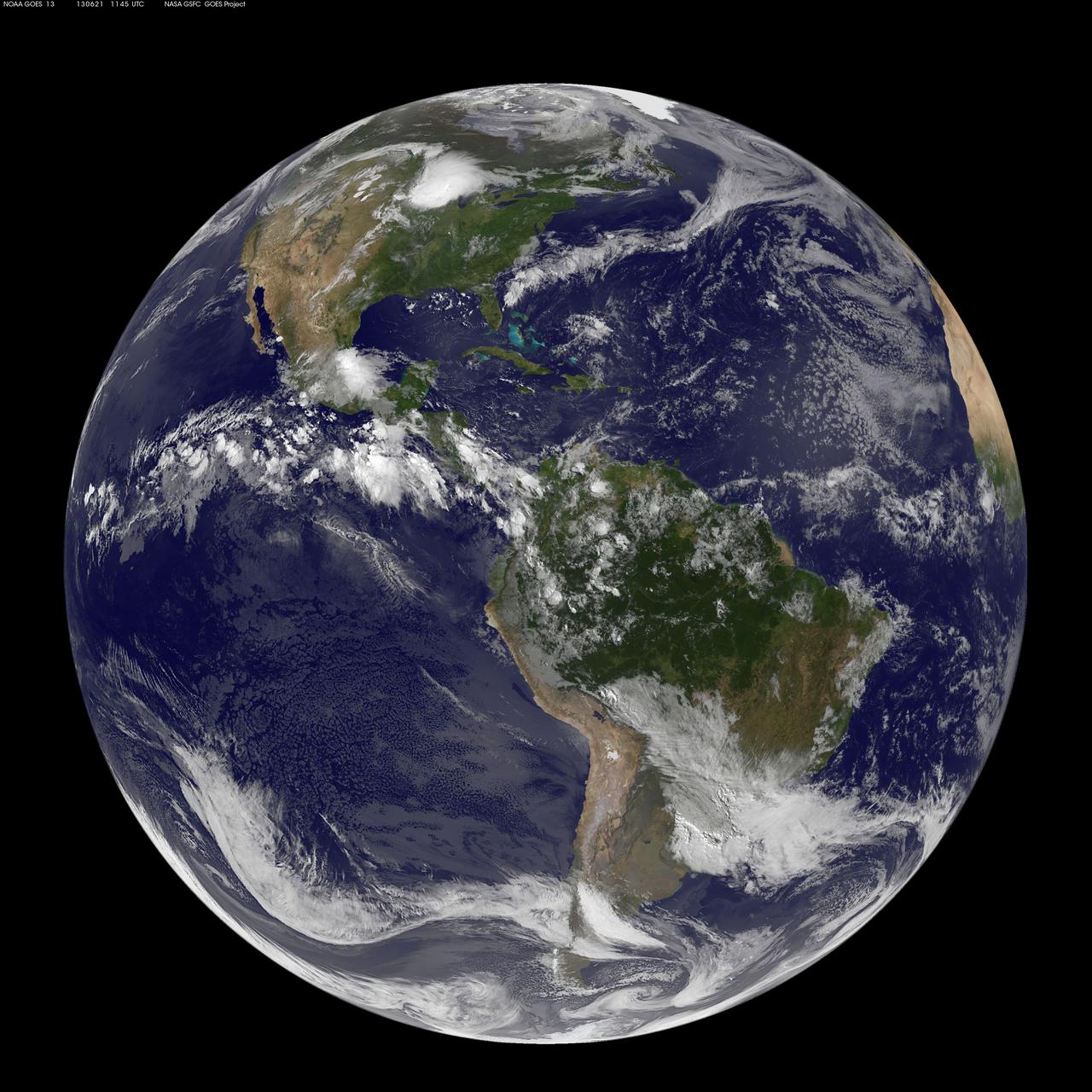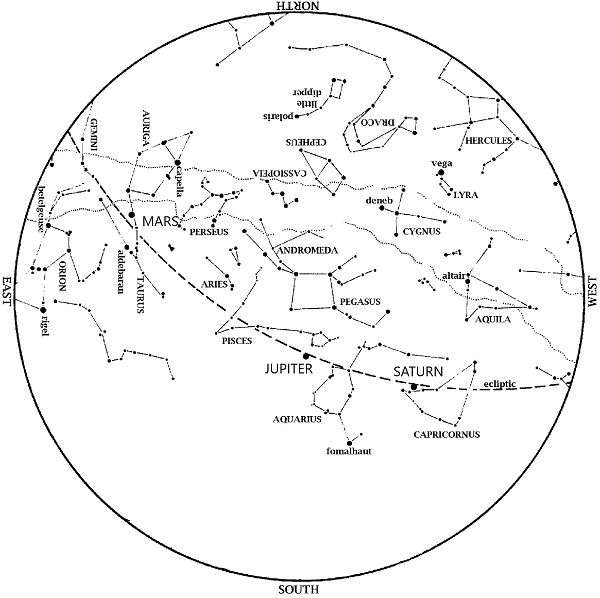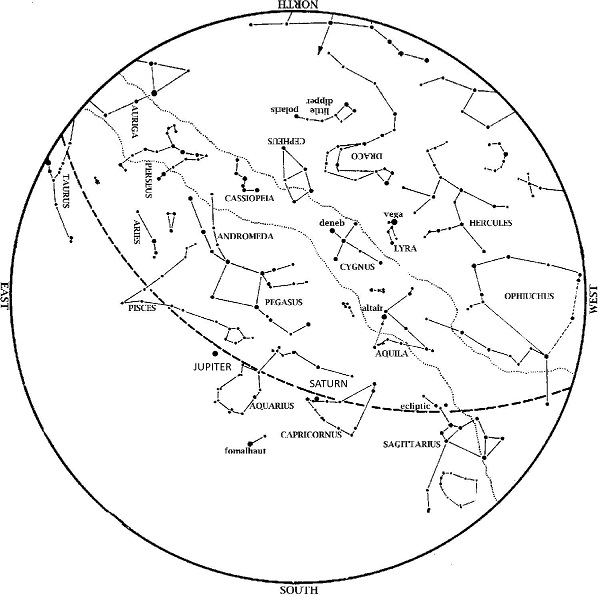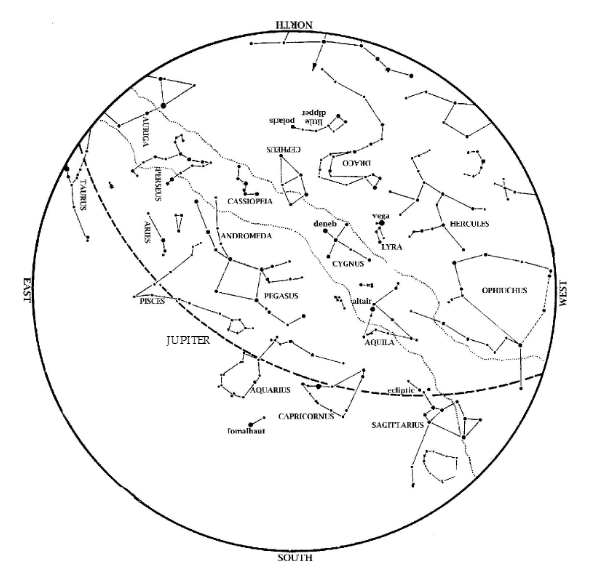The night sky in October is full of comings … and goings.

Venus remains in the west at dusk. It outshines everything but the Sun and Moon, so you can begin observing it during deep twilight.
Saturn leaves the evening sky this month. For the first few days of October, you can look for it in evening twilight to the lower right of Venus. After mid-month, though, it’s hard to see. Saturn is behind the Sun (at conjunction) on Nov. 6.
Jupiter is higher in the morning sky this month. Look for it high in the south at dawn.
Mars, much dimmer than Jupiter, now pulls away from it in the morning sky. It remains in the east at dawn. On the morning of Oct. 15, look for it near Regulus in Leo.
In October, the Big Dipper is to the lower left of the North Star at dusk, and soon sets. As a result, it may be hard to see if you have trees or buildings north of you. As the Big Dipper sets, though, Cassiopeia rises. This is a pattern of five stars in a distinct W shape, which lies directly across the North Star from the Big Dipper. Look for Cassiopeia high in the north on fall and winter evenings.
Autumn represents sort of an “intermission” in the sky, with bright summer stars setting at dusk, while bright winter stars have not yet risen. The “teapot” of Sagittarius sets in the southwest at dusk. The Summer Triangle is high in the west. Meanwhile, the Great Square of Pegasus is in the east, indicating the start of autumn. The stars rising in the east are much dimmer than those overhead and in the southwest, because when you face east at dusk in October, you face out of the Milky Way plane.
The center of our galaxy lies between Scorpius and Sagittarius, while the Summer Triangle is also in the galactic plane. Pegasus, on the other hand, is outside the plane of our galaxy and is a good place to look for other galaxies.
 Moon Phases in October 2013:
Moon Phases in October 2013:
New October 4, 7:33 p.m.
1st Quarter October 11, 6:03 p.m.
Full October 18, 6:36 p.m.
Last Quarter October 26, 6:41 p.m.
The full moon of Oct. 18 enters the penumbra, a region in which Earth partially blocks the Sun. Unlike the full shadow (umbra), however, the penumbra only imperceptibly darkens the Moon.
Sat., Oct. 12, is our annual Astronomy Day at the George Observatory, which lasts from 3 to 10 p.m. at our observatory in Brazos Bend State Park. See here for a full list of activities.
On most clear Saturday nights at the George Observatory, you can hear me do live star tours on the observation deck with a green laser pointer. If you’re there, listen for my announcement.


